
Bad or confusing briefs are a common thing in the ad industry. They also pose a challenge as agencies are unsure of ways to effectively solve problems that brands face. A 2021 global survey by BetterBriefs found that 80% of marketers think they are good at writing briefs, whereas only 10% of agencies agree.
Meanwhile, 95% of marketers fail to provide strategic direction to their agencies. The survey also found that up to one-third of all marketing budgets are potentially wasted due to poor briefs and misdirected work. Khairudin Rahim, CEO of 4As, which recently released a best practice guide “The best way for a client to brief an agency” published by the Chartered Institute of Practitioners in Advertising UK, explained that if there isn’t a well-defined marketing strategy in place, there can be no brief. “Unfortunately, some marketers lean on the creative development process to clarify, and decide their strategies later rather than being clear about these from the outset,” he said, adding:
Poor briefs don’t allow agencies to solve problems or seize opportunities identified by marketers. If briefs are unclear, then agencies can’t be sure what’s expected of them. At which point the second-guessing begins.
He added that often, the root cause is marketers’ and agencies’ inability to see eye-to-eye on what a good brief looks like. “Unchallenged, poor briefs trigger a raft of negative consequences. They lead to confusion, shallow creative thinking and often mediocre ideas. Which in turn leads to unhappy clients, rounds and rounds of creative work, rebriefs, de-motivation and ultimately less effective work in-market,” Khairudin said. He added that agencies are encouraged to say “No” to briefs they don’t understand to avoid future misalignment.
So what makes a good brief? It is one that guides creative thinking and acts as a neutral reference point for assessing the work, Khairudin said. “Brief writers must be clear in their choices. Deciding whether a brief is acquiring new customers, upselling to existing ones, or increasing frequency of purchase requires a choice. When it comes to briefs they are mutually exclusive. The need to address more than one of these choices will require multiple briefs,” he added.
Meanwhile, A+M also turned to agency leaders and strategy leads to find out the top three components for a good brief. Read their thoughts here.
Jarrod Reginald, ECD, The Chariot Agency

If your brief can’t fit on a Twitter post, it’s not a good brief. Not a Twitter thread. 256 characters (or however many characters it is now). It tells me you have a clear outcome you want. And that helps me figure out the path to get you there.
Mazuin Zin, MD, Edelman Malaysia

As agency partners, we need to start co-authoring and co-owning briefs as it brings about a strategic mindset change in how we approach the business challenge. This is true even more so now, as we all are shifting from campaign-centric thinking to being live on businesses virtually, thanks to the nifty data and analytics dashboards, and a battery of specialist teams analysing every post, every tweet.
The game has surely changed for the business of marketing, where every issue, every dissent, and every banter is waiting to be turned into a brief to connect meaningfully with our audiences. And I personally believe our client partners are looking at agency teams as the extension of their communication and marketing eyes and ears to co-own every challenge, every opportunity. Ergo, the onus lies with agency partners to stay live on business.
Darien Mah, founder, FOREFRONT Group

A good brief offers clarity in three key components: challenges, objectives and budget. More information is always better, but these are the bare minimum. For agencies to understand the market challenges, clients should provide sufficient visibility into the overall brand and marketing strategy. In doing so, agencies can better identify the vulnerabilities within and propose better solutions.
Clear objectives are also crucial to the birth of good strategies and ideas. With the certainty of what to measure and how to achieve them, agencies can better focus on the creative process by choosing the most suitable strategy from the get-go. A budget, even when it is an indicative one, helps set parameters and identify key metrics of success.
A brief is only useful when the agency knows how far and deep it can go.
Christopher Greenough, GM, Malaysia at GrowthOps Asia

A great brief gives strategic and clear-cut direction to agencies. It should identify who we are talking to, the product’s positioning comparative to its market and what the project aims to achieve — a behavioural or commercial goal and impact. These can be summed up to the 3W’s: Who we are talking to, why should they care, and what do we want to achieve. The 3Ws are crucial components to building a great campaign — ultimately resulting in better marketing investment for clients.
Some of the common pitfalls we see are a vague targeting of the market (or targeting “everyone”), a lack of reasoning and understanding of why the brief is taking place, last-minute briefings, and not sharing existing research and data with agencies.
Ultimately, agencies also have the responsibility to ask the right questions when the brief is vague and steer the client in the right direction—that’s our job as consultants.
Edmund Lou, head of strategy, Kingdom Digital

Target audience, share findings, and transparency. Having a mass target audience such as 18 to 54-year-old age groups is like fishing in an ocean. Dividing it into primary and secondary groups with different objectives to achieve will allow us to create more relatable personas that the brand can tap on. While brand campaigns usually target a wider audience, social media content marketing requires a more specific target audience for the brand to connect with and talk to.
Any data and insights commissioned by the client would be much appreciated if shared with the agency to avoid duplicates during the presentation.
Clients should also be open to findings from Google research. It’s the best way to understand local market sentiments, behaviours, and perceptions as it has a major impact on human insight.
It helps if clients are transparent too and share information such as the number of pitching agencies. Simply put, knowing the competition is always good. Knowing the budget range, pitch evaluations and reasonable objectives are helpful too. KPIs are key to a campaign but having sales as a KPI is tough as agencies are stuck with a certain product beyond their control. An increase in engagement rates (internal) and brand lift study (external) are some examples to measure the success of a campaign.
Lara Hussein, CEO and founding partner, M&C Saatchi Malaysia

A great brief needs to be an inspiring thought starter. A strong brief both outlines the problem to be solved and provides a useful roadmap on how to get there. I would split the initial thought process into two distinct parts, even before I start writing the brief.
The first is a macro view of the business: an understanding of the market context, competition and target audience (assuming it’s a new brief). The second is more micro: a funnelled-down distillation of the thinking into one page that has been strategically thought-through to provide a springboard for the creative. This micro distillation is what sets a good brief apart from an average one.
We should focus our attention on three key components, firstly defining the problem. What are we trying to solve? The clearer you make the problem, the better the creative team’s understanding, and ultimately the work. Next, define the target. Not just by dry demographic facts, but by bringing them to life: their aspirations, likes, dislikes, beliefs – everything that makes them tick as real human beings.
Finally, arrive at a powerful truth. This is key. Think freely and strategically, to provide your creative team with a truth that’s inspiring, powerful, and differentiating. It should seamlessly bring together the insight and brand information you’ve provided earlier, and be the summation of your overall brief.
Also, not every brief needs to be in words. Think differently, and choose formats which are engaging, fun and thought-provoking. These could even be images or videos which bring your thinking to life.
Sean Sim, CEO, McCann Malaysia

It’s tough to narrow it down to just three components but if I had to pick, I would say it would be a clear objective, followed by a succinct articulation of positioning, and lastly a proper budget. The first one, objective, seems simple enough but we have come across clients that cannot be focused on what they want to achieve. They want everything, including the kitchen sink. That makes for confusion and a dilution of messages. They must prioritise, according to needs and budget.
Next, it may come as a surprise, but many briefs cannot state clearly what the company or brand stands for. A product feature/benefit is not positioning. The lack of clarity wastes time and effort.
Finally, some clients intentionally leave out the budget and want the agency to propose and cost out a comprehensive plan. At the end, the clients say they like it but unfortunately don’t have enough money to run most of the stuff.
Stanley Clement, CEO, Mediabrands Content Studio

Achieving a good brief is not just a client problem, it’s also an agency problem. We too sometimes forget to ask the right questions or fail to steer the conversation in the right direction to get the answers we need. At MBCS, we use a single-page consumer experience planning model that helps us ask the very basic questions, but answered concisely:
1. What is the consumer pain that we are trying to address?
2. What is the gain that the product/service brings to the consumer to resolve/address this pain?
3. What do we want the consumers to do after seeing the communication?
These questions must be answered and addressed with utmost clarity so that the task is clear. Of course, we will need to validate the proof points with research and thorough groundwork, but this is a great starting point to ensure we’re all on the right track.
Fatimah Nazirah binti M Ash’ari, head of business, 65dB and strategy director, TBWA\Kuala Lumpur

As a strategist, I see a client’s marketing brief like a document to get the agency’s buy-in to go on a new journey with them. A good brief should make me feel like I’ve been sold with a new challenge. I should be able to sense not only urgency but passion too by firstly, giving me context and making it slightly personal. A good brief will tell me how you get here and why this brief is here. Tell me your brand problems and your personal take on it. Feed me your research and insights.
Next, clarity and conviction. Clearly define the fundamentals i.e. objectives, audience, and positioning, among others. Be focused on what you want to achieve.
Show me that you are convinced that if we solve this one problem, we going to be on the right track. Showing conviction in one’s brief can be quite sexy too.
Also, share your vision, tell us your desired outcome and not just through KPIs. Imagine the change and impact we’d make together. Let us see your vision of the brand and then we’ll give 110% to help you get there.





